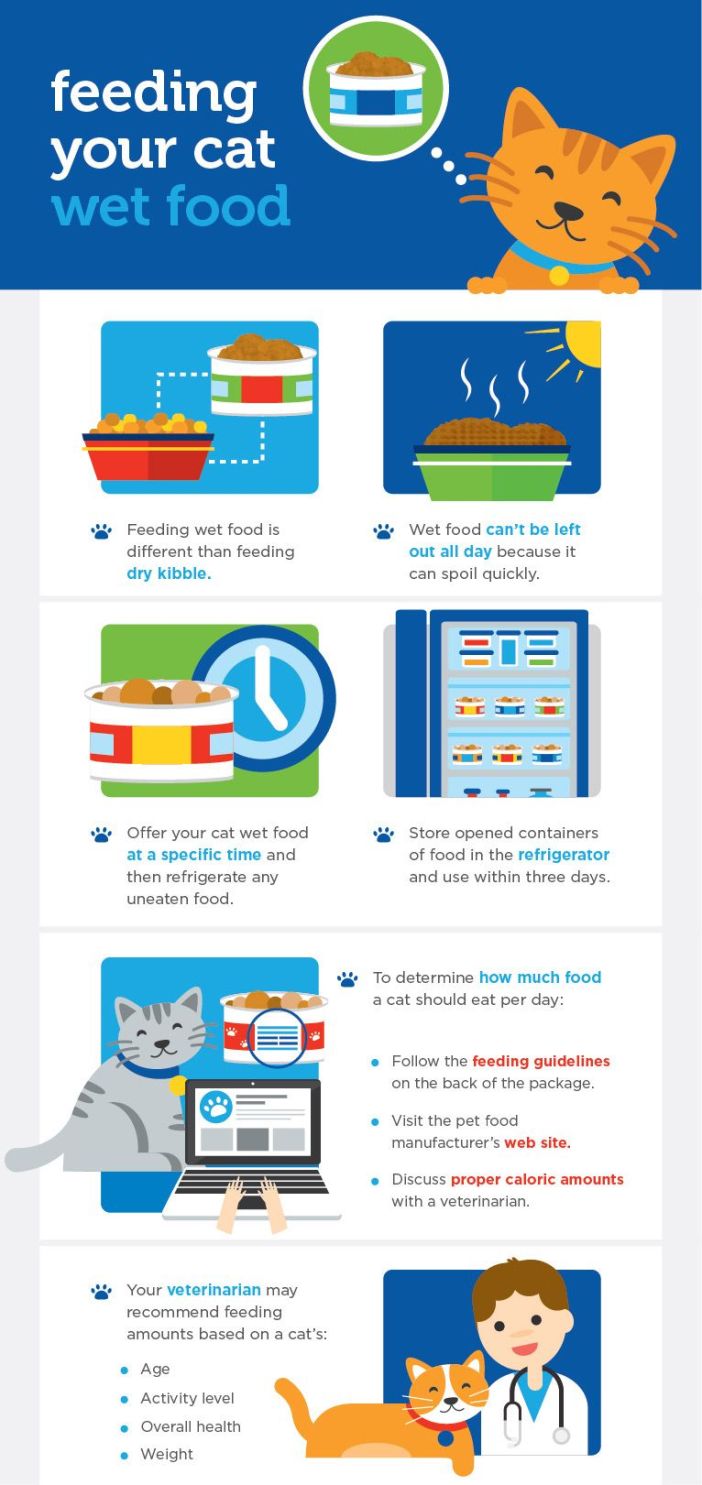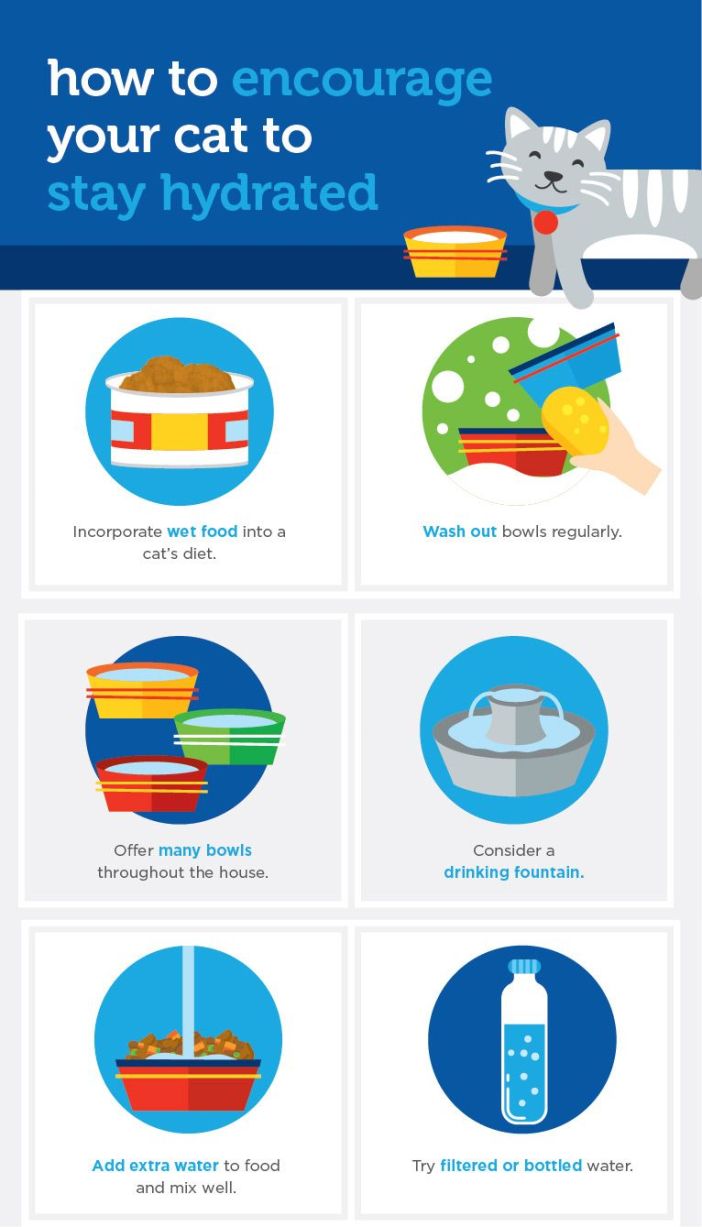When our first cat, Fiona, was diagnosed with inflammatory bowel disease (IBD), my husband did a lot of research on cat nutrition and the best ways to feed a cat. That research still informs our cat food decisions, even though Fiona has been gone since 2005.
Aine, Emmett, and Seamus eat a mostly wet food diet — they get a wet food meal for breakfast and dinner, and I put out a small amount of dry food at lunchtime that they snack on for the afternoon.
It’s taken some trial and error to find what they like. For example, I bought a pate recently that all three like when it is fresh out of the can, but only Aine will eat it cold from the fridge. Microwaving it makes all three happy. The similar flavor in a chunky form? They’ll eat it hot or cold.
The folks at Petco shared this article with us about how to choose the best wet food for your cat. We hope it helps you find the purrfect food for your finicky feline!
How to Choose the Best Wet Food for Your Cat
Selecting the best wet food for your cat is an important decision. Because there are many options, it can be hard to determine what’s going to be best for your cat. Not only does taste matter, but so do size, shape, smell and texture. Beyond palatability, it’s important to take nutritional profile, ingredients, brand trust and the ability to meet your cat’s needs into account when selecting a food. While cats can be finicky about food, the good news is that there are a wide variety of options to suit every palate.
It may take some trial and error to determine your cat’s preferred formula. Don’t be afraid to experiment to find out just what your kitty craves. Most cat food brands offer a variety of consistencies, so experimenting within one brand can also help pinpoint a favorite. (A word of caution: Continually switching foods even within the same brand can lead to GI upset. Allow plenty of time for cats to try new food. Here’s how to transition your pet to a new food.) Read on to learn about different wet food options.
From Broths to Patés: Different Types of Wet Food

Wet food typically comes in a smooth formula like a paté, or in pieces of meat in a thick liquid, such as gravy or gelée (which is similar to gravy but has more of a jelly-like consistency). Keep in mind that many wet food options feature processed meat shaped into strips or chunks while others do in fact contain whole pieces of meat.
Some of the more popular wet cat food textures include:
Paté
Paté has a smooth, mostly uniform consistency. Some patés come in “soft” form, which is creamier with more liquid. Other paté formulas are firmer, while others have soft, large chunks.
Shredded
Shredded formulas typically contain long, thin pieces of meat mixed in gravy or gelée.
Cubed
Just as the name sounds, a cubed formula is cat food chopped into small, distinctive cubes. The cubes are typically mixed in gravy or gelée.
Flaked
Flaked cat food offers small, flat, thin pieces of meat mixed in a gravy or gelée.
Minced
Minced cat food is chopped into very small pieces and mixed together. Minced is chunkier than paté but smoother than other textures that have larger pieces of meat.
Morsels
Morsels can describe almost any type of shape or form—they can be chunks or bits of varying sizes; they are mixed in gravy or gelée.
Sliced
Sliced textures are typically thin, flat pieces of meat contained in gravy or gelée.
Stews
Cat food stews typically contain a chunky mixture of meats and vegetables—though the chunks are typically processed, not pure meat pieces.
Blends
A growing trend in wet cat food is a combination of textures, such as paté on the bottom and stew on the top. There are a variety of names for these types of blends including duos, medleys, duels and more. Blends may come packaged with multiple textures together, or in one package with separate containers.
Broths
Typically a food labeled “broth” is mostly liquid with chunks of meat. Be sure to check the nutrition information on the label as broths may not be designed to be a complete and balanced diet and may be better as a treat or a topper to entice picky cats to eat a regular meal.
Wet Food Feeding Guidelines

Feeding wet food from cans, pouches, cups, trays and more is different than feeding dry kibble. For example, while kibble can be left out for longer periods, wet food should not stay out for very long because it can spoil quickly. Wet food should be fed at a specific time; uneaten food should be refrigerated or discarded.
Open containers of cat food should be stored in the refrigerator and used within three days.
Along with a variety of textures, consistencies and options, wet cat food offers an important benefit: hydration. In fact, according to the Cornell Feline Health Center, wet cat food is approximately 75% water, compared to the 6 to 10% found in dry kibble.
It’s important for cats to stay hydrated specifically for digestive, circulative and urinary health. An adult cat should consume about the same amount of water (in milliliters) as the number of calories they eat per day. For example, if a 10-pound cat eats 200 calories every day, he or she should also consume 200 milliliters of water.
To determine how much wet food a cat should eat per day, follow the feeding guidelines on the back of the package, visit the pet food manufacturer’s website or discuss proper caloric amounts with your veterinarian. Optimal feeding amounts may depend on a specific cat’s age, weight, activity level and overall health.
Hydration is Key

In the summer months, enticing an outdoor cat to drink more water is even more important. You should do all you can to encourage your cat to drink more water. Here are some ideas:
Monitor and know your cat’s normal water intake
First of all, it’s important to take note of how much a resident cat is drinking. Understanding a cat’s typical behavior helps pet parents know whether they need to do more to encourage their cat to drink. While the goal is to get cats to drink more, a cat who drinks excessively could have an underlying medical issue. Make an appointment with your veterinarian if you notice an uptick in thirst.
Incorporate wet food into a cat’s diet
Because wet food contains so much moisture, it’s a great way to help a cat stay hydrated. Some cats, including cats with urinary issues, diabetes, kidney disorders, cancer or hyperthyroidism—as well as nursing cats and senior cats—are especially prone to dehydration. Your veterinarian may recommend a mostly wet food diet to cats with these or other health issues.
Add water to wet food
Some cat parents add extra water to wet food. This creates a soupy consistency that some cats like. When wet food is refrigerated, it may be too cold for your cat’s liking. Adding a small amount of warm water changes the consistency and can increase palatability. Your cat may also enjoy wet food that has been warmed in the microwave. Be sure to test with your finger to make sure it’s not too hot before serving and mix well so the cat does not just lick out the liquid.
Have more than one water bowl
Offering plenty of water bowls throughout the house is a great way to encourage cats to drink whenever they’re thirsty. Try bowls of different materials and sizes since some cats are more apt to drink from a particular type of bowl. Place near cat’s favorite napping/lounging location.
Clean water bowls frequently
Many cats turn their noses up at dirty water bowls. Regularly wash bowls and replace water at least once a day. Standing water can develop contaminants. Many bowls for cats are dishwasher-safe.
Consider water fountains
Lots of cats enjoy water fountains, presumably because of the movement and fresh taste of filtered water. While running water helps prevent bacteria from growing quickly, fountains still need to be completely washed out once a week (sometimes more regularly if needed). It’s a good idea to use filtered or bottled water to keep working parts of the fountain operational.
Try bottled water
Some super sensitive cats prefer bottled or filtered water because they can detect the taste of chlorine in tap water.
Conclusion
Wet cat food offers many benefits, including the ability to meet each individual cat’s particular needs and find a flavor and consistency they enjoy. Including wet food (which has the added benefit of extra hydration, in your cat’s diet) can be a win-win for your cat and you.
Find the original post here: https://community.petco.com/t5/Blog/How-to-Choose-the-Best-Wet-Food-for-Your-Cat/ba-p/73257
Want more cat stories and pictures? Follow Three Irish Cats on Facebook, Instagram, Twitter, and Tumblr!
Great information. Thanks for sharing. We prefer pate food. 🙂
LikeLike
Very informative, thank you! Olive is our pickiest eater here.
LikeLiked by 1 person